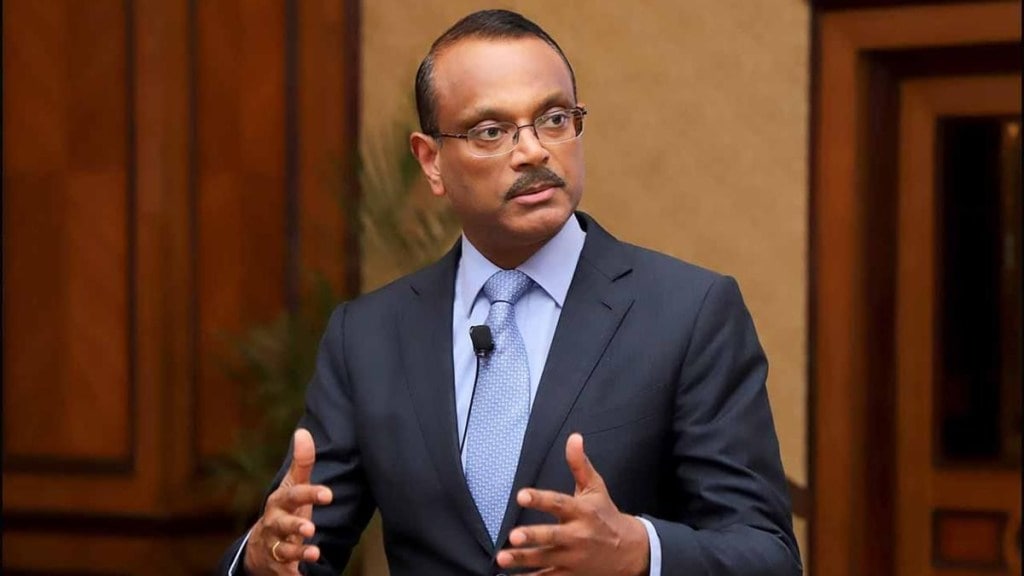Ananth Narayan, former whole-time member (WTM) at the Securities and Exchange Board of India (Sebi), who retired last month, led the probe into Jane Street besides making important contributions in overall market regulation. In his first interview after retirement, he told Ananya Grover and Mahesh Nayak about the market regulator’s focus areas include addressing the supply-demand gap for paper, enabling FPI inflows, and maintaining investor trust. Excerpts:
What was Sebi’s intention behind several regulations in the derivatives market?
Derivatives and speculation are vital for price discovery, market depth, and hedging—but three key concerns stand out. First, retail investors are consistently losing money, especially in index options on expiry day. In FY 2024–25, 93% of over one crore F&O traders lost money, with cumulative losses exceeding ₹ one lakh crore. Second, expiry-day index option volumes were 700 times the underlying cash market, raising concerns about market integrity—echoing the old LIBOR problem where a thin underlying market drove a massive derivatives complex. Third, the market is skewed toward ultra-short-dated contracts, limiting long-term hedging. While reform is needed, regulators must be cautious, as F&O revenues are critical for many intermediaries and market infrastructure institutions that derive significant revenues from F&O. Sudden or excessive intervention could have unintended consequences.
According to you, what more can be done to strengthen the derivative ecosystem where people don’t burn their hands?
I cannot speak for SEBI’s future actions, but several themes may merit deliberation: better evaluating suitability and appropriateness of participants in options trading, encouraging wider use of the Securities Lending and Borrowing Mechanism (SLBM), and rationalising margins for longer-dated strategies. Some market participants have suggested that margins for longer-term contracts, calendar spreads, and other spread trades could be reviewed and possibly rationalised—without compromising on risk—to encourage longer-tenor derivatives.
What was the takeaway from your three years at Sebi?
My journey from market practitioner to academic to regulator has been enriching satisfying, and educative. The biggest takeaway is all market stakeholders must engage with each other, not talk past one another. Regulation must build trust and respond swiftly to crises, while keeping compliance simple. To achieve an optimal balance, SEBI itself must have expertise across each domain. The regulator then needs to sift through external inputs from diverse stakeholders, recognise potential conflicts of interest, account for the voice of silent stakeholders such as small investors, and then take a balanced, consultative, and well-considered call.
What are some of the key areas that the regulator is working on?
India’s investor base has grown from under 4 crore to over 13.5 crore in six years. In FY 2024–25, domestic investors—including mutual funds, pension and insurance funds, and individuals—drove ₹8.8 lakh crore in equity demand, double the previous peak. Despite ₹1.3 lakh crore in FPI outflows, net equity demand hit a record ₹7.5 lakh crore. On the supply side, fresh equity issuance reached ₹4.6 lakh crore, with the ₹2.9 lakh crore excess demand largely met through promoter sales. These trends have continued into FY2025-26 as well. This rise brings both opportunities and challenges. Against this backdrop, three areas appear central to SEBI’s focus: Strengthening investor education and awareness. Second, addressing any supply–demand gap for paper by both simplifying IPOs and deepening asset markets beyond equities, and enabling greater inflows from high-quality long-term FPIs.
How are FPIs looking at India basis your interactions with them?
Chairman SEBI has engaged extensively with FPIs across the US, Asia, and Europe. Many European funds, seeking diversification beyond their concentrated US and European portfolios, view India as a high-growth opportunity. To ease FPI access, SEBI aims to complete registrations within days, not weeks or months. Introduction of new cash market features like daily Closing Auction and and easier block trading should also encourage FPIs. Other irritants for foreign investors pertaining to other regulators and authorities will likely be addressed as well.
Why has the corporate bond market not picked up in India?
Between 2013 and 2018, inflows into debt mutual funds were somewhat comparable to equity mutual fund flows. However, a series of shocks between 2018 and 2020—credit events and sharp downgrades—likely undermined confidence in credit funds. Some participants have also pointed to global ultra-easy monetary policy during the pandemic and tax changes as contributing factors. That said, India’s corporate bond stock has grown steadily, and substantial progress has been made in developing InVITs, REITs, and municipal bonds. SEBI’s push is clearly toward growing asset classes beyond equities—fixed income, hybrids, and commodities included. Personally, I believe developing a more active trading and settlement culture in bonds—akin to our equity ecosystem—would meaningfully deepen this market.
What is the problem with the implementation of T+0?
Faster settlements reduce investor balances lying as float in the intermediary and clearing ecosystem, and hence reduce systemwide risks, enhance transparency of costs for investors, and improve all-round efficiency. In the payments ecosystem, the parallel of moving from the old and inefficient outstation check clearing to instantaneous UPI transfers is a great example of lower systemic risk and higher efficiency. Our market infrastructure – both trading and settlement – is outstanding. Unlike other major jurisdictions, India capital markets can support T+0 settlement, and with some tweaks, even instant settlement. However, given feedback from market intermediaries and FPIs, the implementation of optional T+0 has been put on the backburner for now. Some reforms require broader consensus and may evolve over time.

